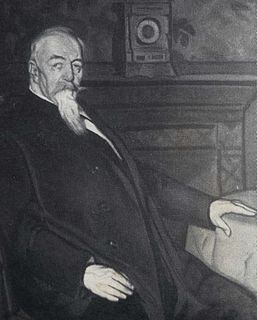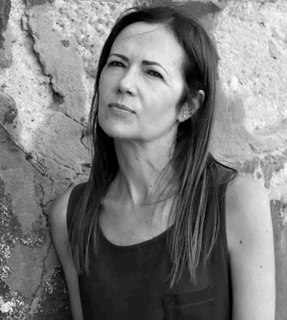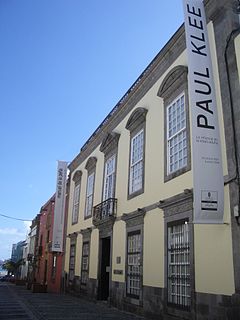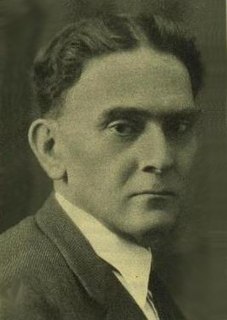The Generation of '27 was an influential group of poets that arose in Spanish literary circles between 1923 and 1927, essentially out of a shared desire to experience and work with avant-garde forms of art and poetry. Their first formal meeting took place in Seville in 1927 to mark the 300th anniversary of the death of the baroque poet Luis de Góngora. Writers and intellectuals paid homage at the Ateneo de Sevilla, which retrospectively became the foundational act of the movement.

The Spanish Golden Age is a period of flourishing in arts and literature in Spain, coinciding with the political rise of the Spanish Empire under the Catholic Monarchs of Spain and the Spanish Habsburgs. The greatest patron of Spanish art and culture during this period was King Philip II (1556–1598), whose royal palace, El Escorial, invited the attention of some of Europe's greatest architects and painters such as El Greco, who infused Spanish art with foreign styles and helped create a uniquely Spanish style of painting.

The Pyramids of Güímar are six rectangular pyramid-shaped, terraced structures built from lava stone without the use of mortar. They are located in the district of Chacona, part of the town of Güímar on the island of Tenerife in the Canary Islands, Spain. The structures have been dated to the 19th century AD and they may originally have been a byproduct of contemporary agricultural techniques. These pyramids stand as high as 12m.
Manolo Millares was a Spanish painter.
Iván Carvajal Aguirre is an Ecuadorian poet, philosopher and writer. In 1984 he received Ecuador's National Prize for Literature, the "Aurelio Espinosa Pólit" prize, for his work entitled "Parajes". In February 2013 he won the Premio a las Libertades Juan Montalvo.

Nicolás Estévanez Murphy was a Spanish military officer, politician, essayist and poet. A federal republican, he briefly served as civil governor of Madrid and as Minister of War in the wake of the proclamation of the First Spanish Republic. A defender of the Africanness of his native Canary Islands, which were a central motif of his written work, he espoused a blend of anti-european, atheist, anticlerical, revolutionary and anarchist ideals. While he showed an unwavering commitment to Spanish patriotism, Estévanez has been reconstructed as a sort of father of Canarian nationalism by Canarian nationalist authors. He was a close collaborator of Francisco Pi y Margall.

Tomas de Aguiar was a Spanish painter, active during the Baroque period. He was a pupil of Diego Velázquez, and known for painting portraits.
Agustín Lazo Adalid was a Mexican artist and playwright who is credited with introducing surrealism to Mexico. Although he grew up during the era of the Mexican Revolution, his time in Europe in the 1920s and early 1930s, set his aesthetics towards the avant-garde movements of that continent, rather than towards Mexican muralism, making him a part of the Los Contemporáneos or “Grupo sin grupo.” His work in art and theater influenced each other, with his art having theatrical themes and his theater having emphasis on sets and visual cues. Lazo retired from art in 1950, after the death of his long-time partner poet Xavier Villaurrutia, supposedly never painting or writing again.
Eusebio Sempere Juan was a Spanish sculptor, painter and graphic artist whose abstract geometric works make him the most representative artist of the Kinetic art movement in Spain and one of Spain's foremost artists. His use of repetition of line and mastery of color to manipulate the way light plays on the surface give depth to his pictorial compositions.
José Antonio Ruiz de Padron (1757–1823) was a noted Spanish politician and Catholic priest. He was a critic of the Inquisition and promoter of a more enlightened Catholic faith. In 1785 he went to Pennsylvania and met and debated with George Washington and Benjamin Franklin. In November 2012, he was awarded the Distinguished Honorary Favorite Son of the Island of La Gomera.

Juan Arnau, Spanish philosopher and essayist, a specialist in Eastern philosophies and religions.

Josefina de la Torre Millares (1907–2002) was a Spanish poet, novelist, and opera singer, as well as a stage, film, radio, and television actress. She was closely associated with the Generation of '27, an influential group of poets including Ernestina de Champourcín, Juan José Domenchina, Concha Méndez and Carmen Conde, that arose in Spanish literary circles between 1923 and 1927, essentially out of a shared desire to experience and work with avant-garde forms of art and poetry.

Ernestina de Champourcín Morán de Loredo was a Spanish poet. She is most associated with the Generation of '27.

Néstor Martín-Fernández de la Torre, generally known simply as Néstor was a Canarian painter and theatrical designer who worked in the Symbolist and Art Deco styles.

Selena Millares is a Spanish writer and professor.

Martín Chirino López was a Spanish sculptor. Cofounder of the group El Paso in 1957, Chirino worked mainly with iron and his work is categorized as abstract art.
Carlos María "Rhod" Rothfuss was a Uruguayan-Argentine artist who specialized in painting and sculpture. He was considered a key theoretician for the development of the concrete art movement in Argentina in the 1940s and was a founding member of the international Latin American abstract art movement, Grupo Madí.

Feliu Elias i Bracons was a Catalan caricaturist, painter and critic.

The Atlantic Center for Modern Art is a contemporary art museum in the Canary Islands, Spain. It is in Vegueta in Las Palmas, the capital city of Gran Canaria.

Domingo Tejera de Quesada (1881-1944) was a Spanish publisher. In 1911-1913 he managed a Madrid illustrated review Nuevo Mundo, in 1922-1939 a Seville-based daily La Unión, and during short spells also other minor periodicals. During his career he contributed to numerous other newspapers, and gained recognition as the 1914-1917 war correspondent of ABC. Politically he initially sided with the Maurista faction of the Conservatives, but later he adopted a Traditionalist posture and became one of the most vehement Carlist propagandists. His political climax fell on the period of 1933–1936, when he served within the Carlist minority in the Cortes.












